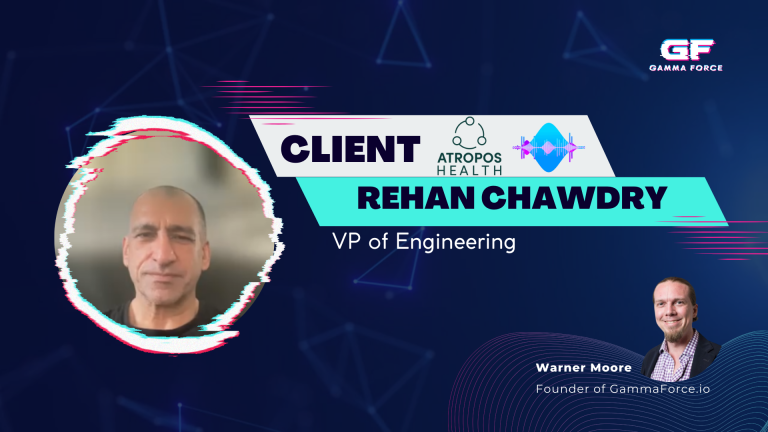Tips for mitigating software engineer burnout
Software engineers face multiple challenges daily. Burnout is a real problem, especially in software development and software engineering. How so? They can face pressure on two fronts:
Constantly learning new technology and keeping up with rapid software development cycles of increasingly integrated and complex software.
Software engineers must stay current in their profession and technology changes. Continuous learning and training can take a toll on both time and energy. Additionally, the speed of software development has increased. Instead of spending years on a single project before release to customers, modern applications are released monthly, weekly, or even daily.
How can software engineers protect themselves from burnout? What about the organizations they work for? This guide describes options for remaining relevant in your career while maintaining a healthy work-life balance to keep professional burnout at bay.
Key takeaways:
- What is professional burnout?
- How can continuous learning or educational opportunities help manage burnout?
- Tips for recognizing and working with professional burnout in software engineers.
- Discover ways to balance your personal life with your professional needs.
What is professional burnout?
Professional burnout is accumulated stress from prolonged exposure to high-stress situations at work for an extended period. Burnout is both physically and emotionally draining.
Burnout presents in many ways, including:
- Decreased job satisfaction
- Reduced sense of competence
- Lack of drive or interest in work-related tasks
- Extreme emotional swings
- Quiet quitting, or going through the motions with no interest in results
Burnout comes from a combination of routine stress and fatigue experienced day in and day out. Burnout can become a vicious cycle of negative emotions that manifest in negative ways. Your overall health can be affected when rest, recharge, or step away from daily tasks are unavailable.
Long-running burnout can negatively impact cognitive abilities and one’s neuroendocrine system, which helps keep the body in balance. Suffering from burnout often withdraw in a strategy frequently called quiet quitting.
As a result, people begin to only do the bare minimum with little or no interest in the quality or the outcome. Burnout is a serious concern for organizations in producing high-quality software that creates and retains customers.
Tips for managing burnout in software engineers
The most effective way to manage burnout is to prevent it. However, preventing burnout is tricky. It’s difficult to identify and even more challenging to manage. After all, we are talking about people and mental health. It’s not an easy subject and cannot be handled with only a company memo or speech to rally the troops.
One option is providing different alternatives for continuous learning. Software engineers need to be in a nearly constant learning mode. Additionally, they must design and code increasingly complex and integrated software systems or secure them. It’s a massive amount of responsibility. When you add frustration from wasted time in meetings that could’ve been an email, inefficient processes, and ineffective management, you have an epidemic of burnout.
By providing different options for training, you allow developers a choice. Choice is important. Having a choice places software engineers in control. Most workers prefer control over their training and when and where they do it. Make the most of it by letting engineers pick their training subject, approach, or method.
Organizations should encourage software engineers to be productive developers and focus on personal and professional growth. Options for continuous learning for software engineers include
- Dedicated learning time built into every development cycle.
- Ability to volunteer for internal and external opportunities.
- Read books, articles, studies, etc.
- Take online courses, tutorials, or listen to professional podcasts.
Most importantly, protect training time. It must be planned and not changed at the drop of a hat or replaced by endless crisis drills. Set aside time for training and protect it for your software engineers.
Volunteering may include stretch opportunities that provide both experience and education. Many open-source projects need quality engineering volunteers. It’s a great way to build a network of software engineers and gain experience.
Invest in a library of physical or online books. Books are a viable and often pleasurable method of training and education. Keep multiple copies where every developer can access them. Consider also paying for online course subscriptions.
Consider hosting quarterly or yearly hackathons or innovation challenges. Give developers time to explore new technology and work on something different than their normal assignments. With hackathons, developers learn skills and form working relationships with others in and outside of engineering.
Another option is attending monthly professional organization meetings of software engineers. They are either online or in-person and exist in most major cities. There are also online educational sessions and webinars presented on LinkedIn. Likewise, consider providing engineers access to professional engineering organizations’ blog posts and industry newsletters. Even if the information seems small, it can spark interest.
Owning the journey and building skills
Organizations can help prevent burnout by creating educational roadmaps with options that engineers can choose from. The options should include courses outside of coding. For example, an educational roadmap may include learning UI/UX design principles or the latest security protocols. Perhaps learning new testing techniques, running a user acceptance testing session, or building new hardware from scratch.
The intent is to break up the work routine and prevent burnout. The intent supports the goal of providing choices for developers to enhance their skills while at the same time helping them stretch their legs, so to speak.
Most software engineers sit at a desk at home or in the office 8+ hours a day (or more) and look at a screen. It can drain your eyes and brain and do nothing for your physical health.
To help prevent burnout, get engineers out of their chairs and off their screens for breaks. Walking local paths, biking, or even going to lunch. Anything that breaks up the routine can help engineers from chaining themselves to the desk.
Organizations can help prevent burnout by
- Setting realistic goals and deadlines.
- Planning in time for training or education.
- Allowing developers to choose from a variety of training options.
- Reduce the number of unnecessary meetings.
- Plan development strategically.
- Plan vacation schedules so engineers can feel comfortable taking time off.
Balancing the professional with the personal
Creating a healthy work-life balance is more than a marketing buzzword to attract employees. Work-life balance prevents burnout and increases employee engagement. Better quality time translates to higher quality work and increased productivity for organizations.
Ways to achieve work-life balance:
- Set clear and distinct boundaries.
- Set a work schedule that includes time away from the computer.
- Prioritize healthy habits, including both diet and exercise.
- Practice time management at home and work.
- Leave work at work when you are at home.
Organizations wanting to retain skilled developers encourage healthy habits. From free health incentives to allowing time to even walk around the building. Perhaps even weekly lunches with healthier options rather than fast food or sugary sweets.
Allow software engineers to work intelligently. Long hours are neither healthy nor productive, they are just long. Humans can only work so long before their brain, eyes, and motor functions are exhausted. Allow time for socializing, and don’t penalize developers who walk away from their desks. Focus on the quality of the work rather than how many hours each engineer works.
Keeping it real and avoiding burnout effectively
Software engineer burnout is at an all-time high. It’s a serious problem for engineers and the organizations they code for.
Organizations can practice many key behaviors to reduce engineer burnout, including easily accessible options for training, the opportunity to innovate and create within a team, and authentic support for work-life balance.
At Gamma Force , we’re passionate about helping businesses reach their full potential through innovative software engineering solutions. Our team of experts specializes in providing strategic technical expertise, and we’re committed to continuous improvement and collaboration to ensure that your business receives the best possible service.
We take pride in offering leadership, confidence, and actionable solutions to help your business thrive in today’s competitive market. If you’re looking for a trustworthy partner to help you achieve your goals, look no further than Gamma Force.
Contact us today to learn more about how we can help your business!







